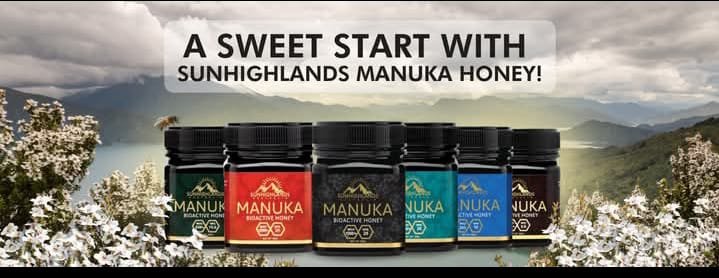
All honey may look golden, but what it can do for your health tells a very different story. Here’s how to know which kind of honey actually lives up to the promise.
When Natural Isn’t Always Enough
If you’re someone who shops with wellness in mind, chances are you’ve come across Manuka honey. It’s marketed as a natural powerhouse—often with a price tag to match. Sitting right next to it, though, is another option: raw honey. Unfiltered, unheated, and usually cheaper.
So which one’s better? Or rather—what does “better” even mean here?
This is where things start to get confusing. While both types are natural, they serve different purposes. Knowing which jar works for your needs isn’t just helpful—it’s the key to actually seeing results.
Not All Honeys Work the Same Way
Let’s clear this up with the basics.
Raw honey is honey in its purest form. It’s minimally processed, which means it retains natural enzymes, antioxidants, and traces of pollen. Its texture is often thicker, and its flavor varies depending on the flowers the bees visited.
Manuka honey, meanwhile, comes specifically from the nectar of the Manuka bush, found in New Zealand and parts of Australia. What makes it special is a compound called methylglyoxal (MGO), which gives it unique antibacterial strength.
So, when comparing “raw honey vs manuka honey,” we’re really talking about two very different products. One is excellent as a daily natural sweetener with general health benefits. The other is known for its powerful, targeted effects—especially when it comes to healing and immune support.
How This Plays Out in Real Life: Parramatta Case Study
Here’s a real example from someone who had the right idea—but chose the wrong jar.
Rina, a 45-year-old primary school teacher from Parramatta, was dealing with recurring sore throats and low energy. Her goal was simple: boost her immunity with something natural. She started using raw honey from a small beekeeper market near Harris Park. It tasted amazing and felt good to support local.
But after two months of adding it to her tea every morning, she wasn’t feeling any different.
That’s when a naturopath she visited near Church Street recommended she switch to a certified UMF 15+ Manuka honey. This new jar looked almost the same—only darker in color and way more expensive. Still, she gave it a try.
Within three weeks, she noticed her throat was no longer irritated in the mornings, and her sinus congestion had eased. Her energy started to pick up too. The difference wasn’t just in the honey—it was in what it contained.
What Makes Manuka So Different?
It’s not that raw honey is ineffective. But the active ingredients in Manuka honey make it a more consistent and reliable option when you’re dealing with specific health concerns.
Here’s why:
- Certified Ratings: Manuka honey includes a UMF or MGO number that confirms the strength of its antibacterial activity.
- Targeted Use: Manuka is often used in hospitals for wound care, thanks to its natural ability to fight harmful bacteria.
- Purity Control: It’s tested for specific compounds, including MGO, DHA, and leptosperin, ensuring consistent quality.
Raw honey, while wholesome, can vary a lot depending on climate, storage, and floral variety. Some batches might be potent—others might not.
If you’re just looking to sweeten your oats or make a homemade face mask, raw honey is a fantastic choice. But if your goal is to treat inflammation, boost immunity, or support healing, Manuka brings more to the table.
Choosing the Right Honey for Your Needs
So how do you decide what’s right for you?
Here’s a quick way to think about it:
Go with Raw Honey if:
- You want a more affordable, everyday sweetener
- You’re buying local and supporting small businesses
- You’re using it for general wellness, not targeted healing
Choose Manuka Honey if:
- You’re dealing with health issues like sore throat, skin conditions, or digestive inflammation
- You want lab-tested strength and consistent results
- You’re looking for a therapeutic effect, not just a kitchen staple
And if you’re aiming for serious benefits, look for the best manuka honey australia has to offer—brands that list their UMF or MGO score clearly and are sourced from authentic producers.
Don’t Get Fooled by the Label
Be cautious with jars that say things like “Active” or “Bioactive” without a proper UMF or MGO rating. These words sound scientific but aren’t regulated. Some brands use them to charge more—without backing it up with testing.
Instead, trust certified Manuka products that display:
- UMF (Unique Manuka Factor) or MGO (Methylglyoxal) ratings
- Lab results or QR codes you can verify
- Country of origin (New Zealand or certified Australian regions)
If it’s not tested, you’re just guessing—and that’s not a great place to be when your health’s involved.
Closing Thoughts: The Right Jar for the Right Reason
There’s no one-size-fits-all answer when it comes to honey. Both raw and Manuka have their place. What matters most is knowing what you want out of the jar—and picking accordingly.
If your goal is sweetness with a side of nutrients, raw honey will serve you well.
But if you’re looking for more than flavor—if you want something that actively supports healing, immunity, or inflammation—then Manuka honey, especially from a trusted source, is worth the investment.

